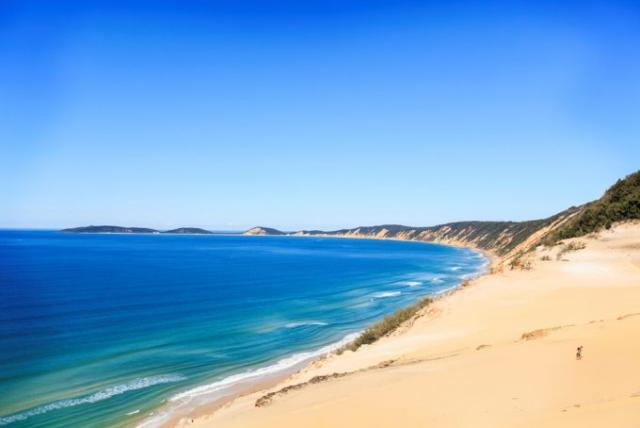
Big national park additions are on the way for the near-Gympie region, as the state government powers ahead with plans to link protected wilderness areas from Conondale to Kilkivan and Noosa to K’Gari (Fraser Island).
The additions will connect vital wildlife corridors along the whole of Gympie region’s coastal and western boundaries.
They are part of a 43,000ha expansion program for wildlife reserves across Queensland, announced last week by Acting Premier Steven Miles.
“Combined, our national parks, nature refuges and other protected areas cover 14.3 million hectares – that’s an area double the size of Tasmania,” he said.
Environment Minister Meaghan Scanlon said the mix of new and expanded nature refuges, as well as additions to a number of national parks, were part of a government investment of $262.5 million to expand and create new national parks.
It was the single biggest such investment in Queensland’s history,” she said.
“It’s great to see this batch include a number of nature refuges, areas that Queensland landholders have nominated to protect the critical ecosystems, plants and creatures that live within it.”
Near-Gympie areas now formally declared as protected include a new 51.53ha Boreen Nature Refuge, a new 35.3ha Keysii Nature Refuge, a 121.53ha addition to the Weyba Nature Refuge and a 5.11ha addition to the Yurol Nature Refuge (all in Noosa region), plus a 92.13ha addition to the Oakview National Park near Kilkivan.
Oakview borders on Wrattens National Parok, which borders on forestry and other largely wilderness areas down to Imbil and Conondale.
Environment Minister Meaghan Scanlon last year announced a 2400ha addition to Tewantin National Park, including a transformed role for revegetated native habitat in areas now used for pine plantation forestry.
That turned “the old Yurol Ringtail State Forest into a protected area, with major revegetation works to be carried out by the Kabi Kabi People Aboriginal Corporation, (private contractor) Greenfleet Australia and Noosa Landcare,” Ms Scanlon said.
“Transfer of rehabilitated forestry to Tewantin National Park will ultimately double the [ark’s size and create a protected corridor to the Cooloola section of the Great Sandy National Park.”
Noosa Parks Association president Michael Gloster said at that time the program of expansion was an important step in achieving the 60-year NPA dream of “a continuous national park running from Cooloola to Coolum.”
Noosa MP Sandy Bolton said the national park expansion program was the culmination of decades of work by the community, “the end of a long-held vision and process involving many, and the beginning of a new journey.”
She also highlighted the important connections and corridor networks the expansion program would create, and said the program would “double the (Yurol) park’s size and create a protected corridor to the Cooloola section of the Great Sandy National Park.”
Supporters at the time claimed the project would sequester “hundreds of thousands of tonnes of carbon emissions,” combined with providing a direct revenue stream for traditional owners.
The ongoing national parks plan has been described as a great step forward by supporters.






